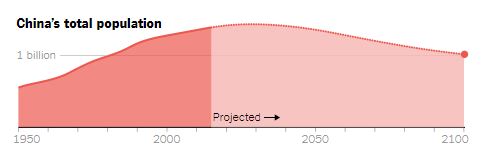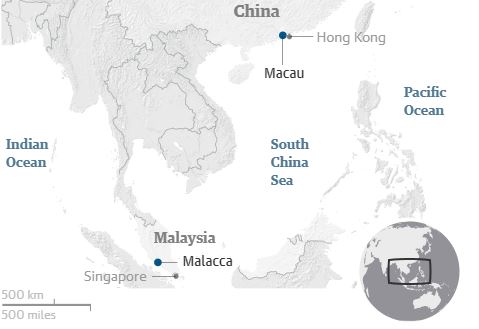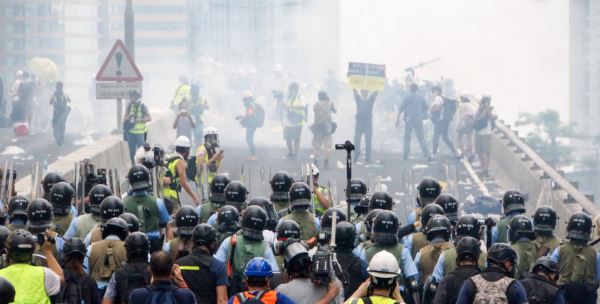Every Verizon
customer has his/her own story with the largest telecom giant in America. My
story has developed into a state of unreason in the past 48 hours. I include
time consumption in some scenarios below so that you make your judgment about
how time-consuming my communication with Verizon is. Although Verizon boasts
itself as the country’s best, the fastest and the widest cellular network, the communication—the
most important part in my opinion—of customer service has long fallen short. I
hope my account of my unreasoning experience will shed light on your reasonable
consumer protection.
1) Failure in communication clarity via telephone.
Customers cannot
find help with their phone bills from the brick-and-mortar store. The only way
to talk to the Verizon staff about your account is by telephone. Not to mention
that every time when you call Verizon’s hotline, you need to go through a
series of robot Q&A and voice recognition exercises. If you fail to answer a
question, the robot is most likely to ask you to try again. So you do it over
and over again until you—as human and humane as you are—become robotic and
indifferent in answering a robot’s question.
Time consumption: about 20 minutes
Remember,
Verizon is the BEST as the company touts. When you finally talk to a human
agent, the line quality is, on the contrary, not the best. It’s either fuzzy or
with an echo. If your line is unlike what I describe, lucky you; perhaps you
should try your luck and buy a lotto ticket. By my hindsight, it’s not a bad
idea to record your phone conversation. You’ll need it after you read on.
Be prepared for
an earful of new products during this conversation. As soon as you authorize
the human agent to look at your account, she/he has begun to “optimize”—a
frequently used word in Verizon’s dictionary—your account by talking you into
their new products and services. The human agent speaks fast as if she/he wants
to impress you with their professional knowledge. Either they are tired of the
repetitive introduction given to every phone customer, they can’t wait to
finish it by speaking fast; or they are trained to introduce the new products in
one breath to brag about their speech fluency. Nevertheless, your understanding
is not their concern. And please lower
your expectation, or even have no expectation, for the human agent’s
pronunciation and punctuation. You’re lucky again if you talk to an agent who
can enunciate for you. If you ask him/her to repeat, you’re likely to get the
robotic reply in a tone of impatience.
Time consumption: about 2-3 minutes for Verizon
human one-time sale talk and problem shooting. Full length of conversation
subjects to your query and request for repetition.
2) Failure in information transparency.
We’re still on
the phone with the human agent. Holding the hook tightly to my ear, I don’t
want to miss a thing despite the poor connection. Well, Verizon certainly is
doing its BEST at confusing you. Just a look at these names: Quantum Gateway,
Double/ Triple Play, Preferred HD, Extreme HD, so on and so forth; a
Verizon-outsider won’t have a clue. If you’re fortunately, or unfortunately, a
Verizon customer, you may be acquainted with the advertising lingo. But no one,
for sure, can distinguish the nuances of the product name and the content.
What’s more, the
changes of service coverage and costs are strictly controlled by the provider.
The users are always the last one to realize changes are made. On the phone,
the human agent tells you all the perks if you sign up for something. But no
one tells you the consequences and consumer’s liability if you change your mind
after enrollment or during the contract period.
This common
statement in almost all corporate Terms and Conditions also applies to Verizon:
The company reserves the right, at its discretion, to change, modify, add, or
remove portions of these Terms at any time by posting the amended Terms.
What can a consumer
do? Sadly to say, nothing, except for checking your Verizon account closely. These
are two examples of my state of unreason. Bear with me.
A ridiculous
unreason is Verizon now charges a $12 monthly fee for its Wi-Fi router. Until
today, I still cannot get a satisfying answer from Verizon about why there was
no router fee in my old plan but there is one in the current plan, which was
renewed for a longer term by a telephone human agent who took advantage of our lack
of knowledge about Verizon lingo. We’re charged $12 monthly for the router
despite the fact that there is no upgrade of Wi-Fi speed, or of the appearance
of the router box, or of human intelligence of our service. My reasonable
question only brings a robotic answer from a different human agent on the phone:
“We now charge the Fios Quantum Gateway router monthly.”
Another absurd
unreason is no one from Verizon explains why the administrative fee and taxes
are creeping up in my recent bills. A store human staffer told me to ignore the
increase of taxes and charges because it’s a small amount and there is nothing
I can do about it. Really? I’m a consumer. Shouldn’t I have the right to know
why?
I have tried all I can to communicate with Verizon: on the phone, in the store and in instant messaging on Verizon’s website but to no avail. My understanding is: if it’s a compulsory taxation by the government, a tax payer should be informed in advance and even vote on the implementation. The only Verizon explanation I find is here.
But the website
still cannot explain why there is an increase of tax and charges now. Who decides
the increase? How often? When will be the next increase? If part of the
surcharges goes to Verizon, the regularity of the increase and the reason
behind the decision of the increase must be fully explained to tens of
thousands of customers. The current practice is arbitrary and unreasoning.
3) Failure in providing
honest and fair customer service.
It’s no exaggeration that every human Verizon staffer is a salesperson, from customer service to technical repairmen. Enticing customers to purchase a product or a service is in Verizon workers’ DNA. Because of our unfamiliarity with Verizon’s ever-changing sales strategies and marketing lingo, we are always mindblown in our communication with Verizon workers.
The latest
episode is about returning a TV box to the Verizon store. Long story short. The
human worker kindly helped us to close our canceling of a TV box rental and gave
us a guidebook of Verizon TV packages. He said with the guidebook it would be
easier to conduct our phone call conversation with Verizon customer service
about TV plans. But by mistake he terminated the wrong TV box serial number in
the system. So we lost our cable TV that night. That led to our 1.5-hour phone
conversation with a heavy-accented technician on the phone.
Time consumption: About 1.5 hour for long-distance
human troubleshooting of cable TV
I followed all
his instructions to reboot our TV set and Verizon TV box but the cable TV never
came back. The last resort was Verizon had to send another ground technician to
the house to fix the problem. Normally, it costs $99 for an in-person repair.
The heavy-accented technician on the phone promised the fee would be waived as
he ran out of his long-distance resources to solve my issue. Two hours after
our phone conversation, I checked my Verizon account and found $15 was charged
for TechSure Plus, a monthly virus protection plan that I did not ask for.
Time consumption: an evening of at least 2 hours for
a customer’s active monitoring of Verizon billing
So I wrote to
Verizon’s online instant messenging agent nicknamed Jessica. She explained to
me what TechSure Plus was for. And I wrote back I wanted to cancel it, and she
initiated my request. We exchanged a pin number for account ID recognition,
back and forth. It took about 30 minute before my request was fulfilled. But
when I checked my Verizon account, the bill did not reflect the removal of the
plan. By then, it was past my bedtime and I had to entrust my faith in God
according to what is written on the US dollar bill—“In God We Trust.” I hoped that
after I woke up, my Verizon account would correctly show $15 in my pocket. Off
I went to bed.
Time consumption: About 30 minutes to close my
daylong contact with Verizon
Thank you for
reading this far. Living in America one has many choices, from making a decision
about which cereal brand to buy to which car to lease or own. But when it comes
to telecommunication in America, my choice is limited.
In many
countries including China, your mobile phone is unlocked. As long as you have a
SIM card you can use a different phone and carrier. But in America, if you want
the BEST deal, you have to use the carrier’s locked phones. Verizon, AT&T
and Sprint are the giants. T-Mobile is merging with Sprint.
In China, you can get unlimited data for a reasonable price equivalent to a cup of coffee. But in America, the basic data plan cost is equal to a restaurant meal or more. China’s 4G network is relatively reasonable in pricing compared to the US. In the new battleground of the 5G network, China apparently has the advantage because its affordable 4G service provides a solid customer base for the upgrade. When big companies like Verizon dictate the narrative of industry pricing in the US, customers are the sufferers of a high-priced, sales-manipulative telecommunication system. It’s a mystery for me how to improve my experience with Verizon but at least my misery with Verizon is now at truce.
My takeaway is be skeptical and be vigilant.







